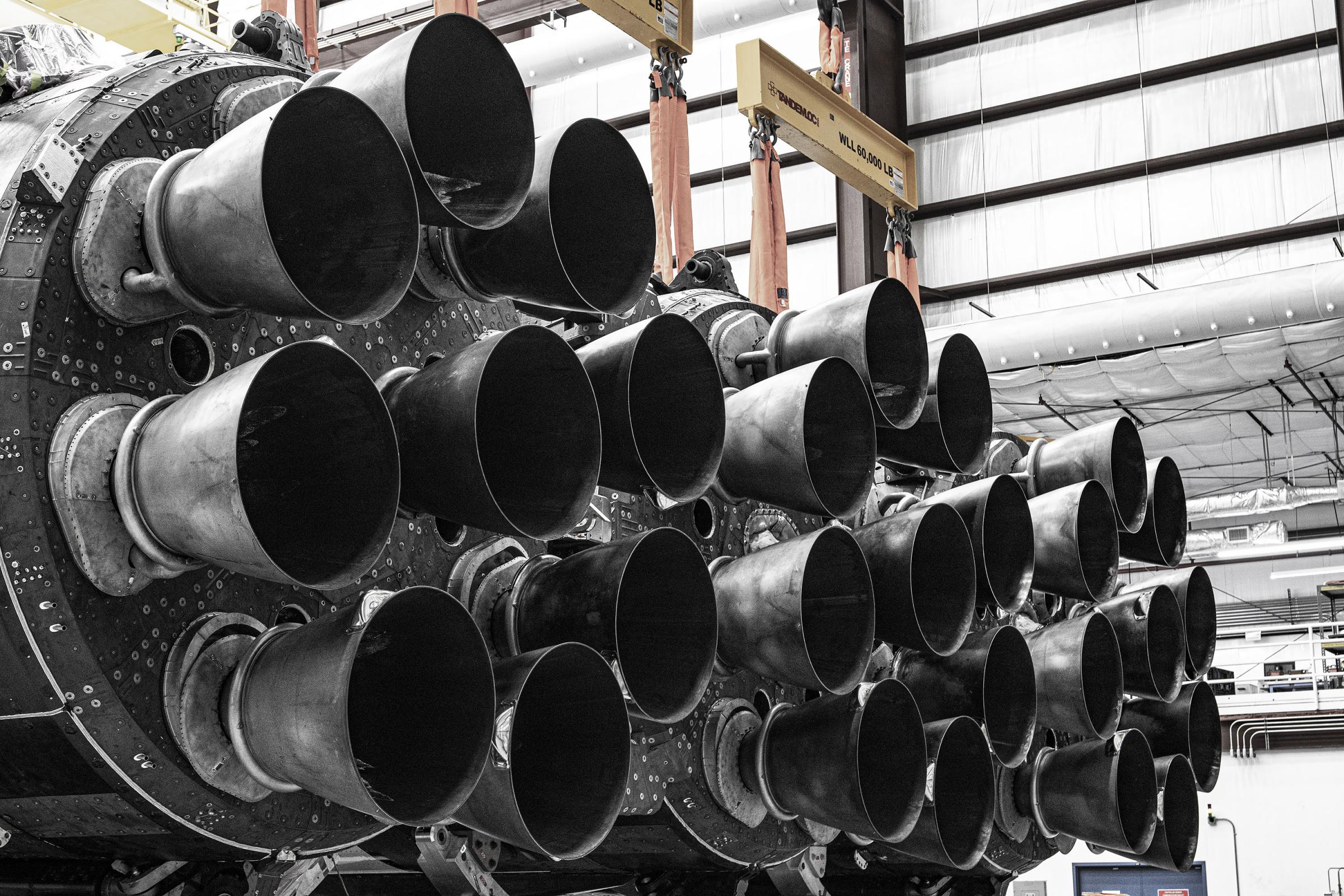

News
SpaceX assembles Falcon Heavy rocket for first launch in 40 months
SpaceX has assembled the fourth Falcon Heavy for the rocket’s first launch in 40 months.
A photo shared by SpaceX on October 23rd shows that it has mated Falcon Heavy’s three first stage boosters together while preparing for prelaunch testing. Simultaneously, workers have completed the equally important task of converting 39A’s transporter/erector (T/E), which has been configured for single-core Falcon 9 rockets for over three years.
The transporter/erectors SpaceX use for all Falcon launches are a bit like a mobile backbone and launch tower combined. Their first purpose is to transport horizontal Falcon rockets to and from their integration hangars and launch pads. They’re also tasked with raising Falcon rockets vertical and lowering them back down for transport or worker access. Most importantly, they connect to a pad’s ground systems and distribute propellant, gases, power, and communications to Falcon 9 and Falcon Heavy through multiple umbilicals and quick-disconnect ports.
Falcon Heavy, which can only be launched out of LC-39A, has three times as many boosters as Falcon 9 and necessitates significant modifications to the pad’s T/E when switching between the two. The process is much harder when moving from F9 to FH, and waiting almost three and a half years between Falcon Heavy launches likely hasn’t made the conversion any easier. But on October 23rd, after numerous tests and weeks of work, the Pad 39A T/E picked up the ‘reaction frame’ that attaches to the bottom of Falcon rockets and was brought horizontal.
Thanks to the nature of Falcon Heavy and Pad 39A’s infrastructure, what happens next is more or less guaranteed. During normal Falcon 9 operations, 39A’s integration hangar is large enough for two or three unrelated Falcon boosters to remain while the T/E rolls inside to pick up a full Falcon 9. More importantly, Falcon 9’s booster and upper stage can technically be integrated off to the side and craned onto the T/E when ready. But with Falcon Heavy, which has a first stage akin to three Falcon 9 boosters sitting side by side, there isn’t enough room inside the hangar to integrate the rocket with the T/E inside.
For Falcon Heavy, the T/E can thus only roll back into the hangar once the rocket’s three boosters and upper stage have been fully assembled and are suspended in mid-air. SpaceX’s October 23rd photo shows that three of the four cranes required for that lift appear to already be in position, further confirming that T/E rollback is imminent. Once the T/E rolls back to the hangar and Falcon Heavy is attached, the rocket will eventually be transported to the pad and brought vertical for wet dress rehearsal (WDR) and static fire testing.
Update: SpaceX began rolling the T/E to Pad 39A’s integration hangar around 1 am EDT, October 24th.
The US Space Force’s USSF-44 payload – a mysterious pair of satellites that are more than two years behind schedule – will almost certainly not be installed on Falcon Heavy during prelaunch testing, so the rocket will need to roll back to the hangar at least one more time after testing to have its payload fairing attached.
Combined, that prelaunch process could easily take a week or more. Multiple sources report that Falcon Heavy is scheduled to launch no earlier than (NET) 9:44 am EDT (13:44 UTC) on Halloween, October 31st. But even if the rocket rolls out today (Oct 24), the odds are stacked against Falcon Heavy sailing through its first integrated prelaunch tests in 40 months, and delays are likely.
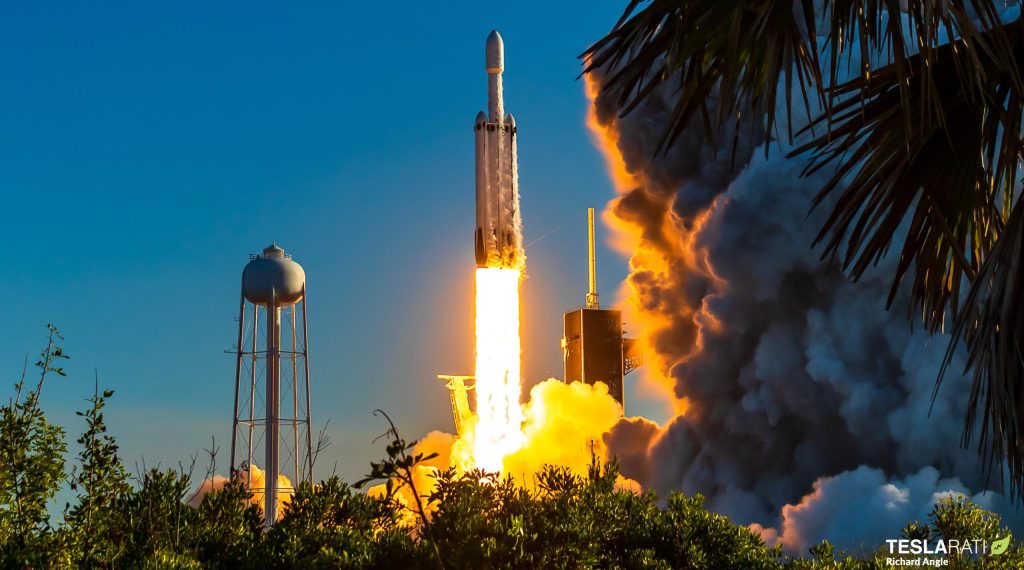
For Falcon Heavy’s fourth launch, all three of the rocket’s boosters – B1064, B1065, and B1066 – are new, as are its upper stage and payload fairing. An FCC permit for the launch has confirmed that SpaceX will intentionally expend the rocket’s new center core while its twin side boosters will attempt a near-simultaneous landing back at Cape Canaveral. USSF-44 will be SpaceX’s first attempted launch directly to geostationary orbit (GEO), an exceptionally challenging mission that requires the rocket’s upper stage to coast in space for around 4-6 hours between two major burns.
If successful, Falcon Heavy will insert the USSF-44’s mystery satellites into a circular orbit ~35,600 kilometers (~22,150 mi) above Earth’s surface. At that altitude, orbital velocity matches Earth’s rotation and spacecraft can effectively hover – indefinitely – above their region of choice.
Falcon Heavy is the most powerful operational rocket in the world. At liftoff, it weighs around 1420 tons (~3.1M lb) and can produce more than 2300 tons (~5.1M lbf) of thrust. In a fully expendable configuration, Falcon Heavy can launch 26.7 tons (59,000 lb) to an elliptical geostationary transfer orbit and 63.8 tons (141,000 lb) to low Earth orbit. SpaceX doesn’t advertise its direct-to-GEO capabilities.
News
These Tesla, X, and xAI engineers were just poached by OpenAI
The news is the latest in an ongoing feud between Elon Musk and the Sam Altman-run firm OpenAI.
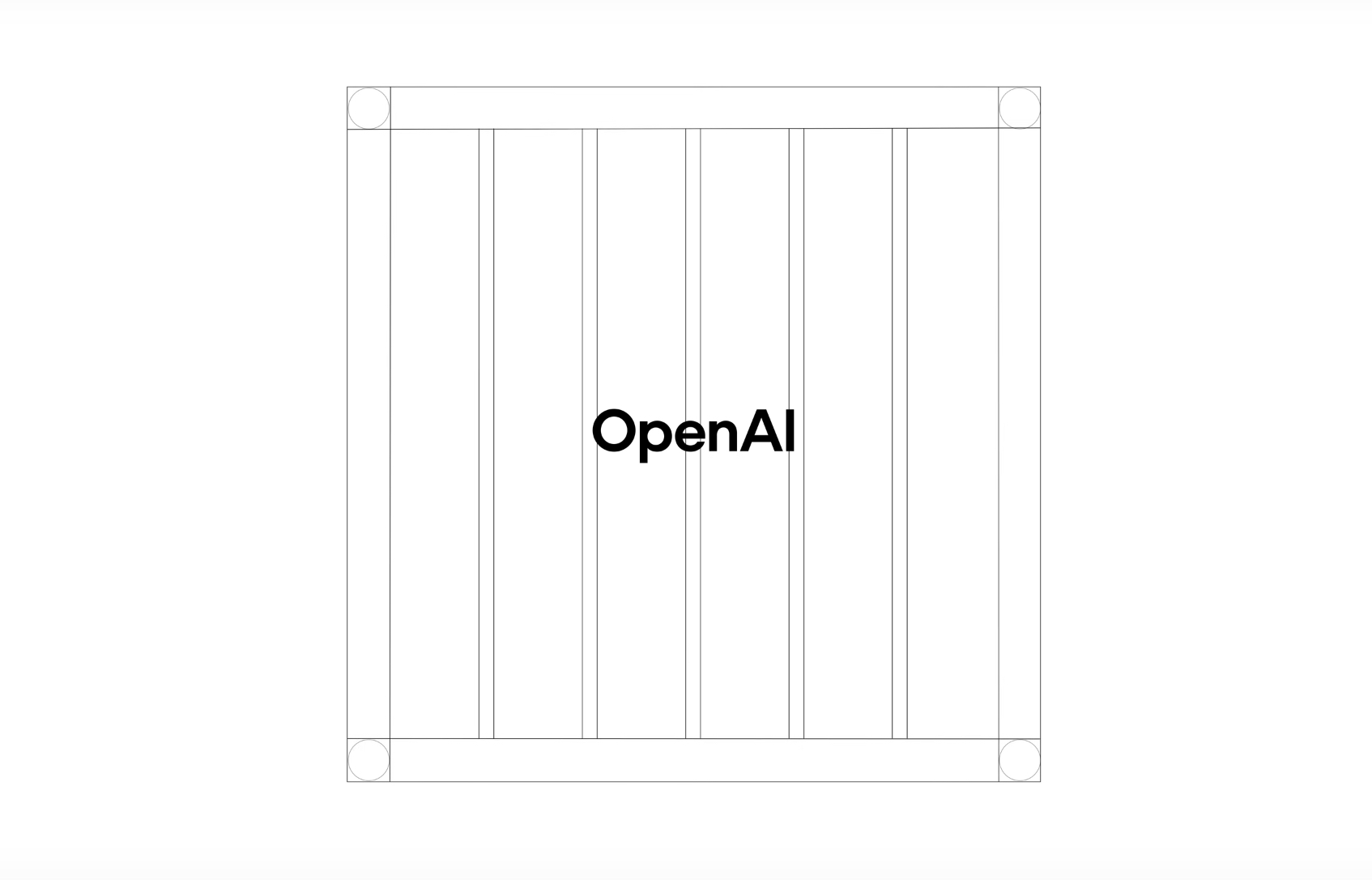
OpenAI, the xAI competitor for which Elon Musk previously served as a boardmember and helped to co-found, has reportedly poached high-level engineers from Tesla, along with others from xAI, X, and still others.
On Tuesday, Wired reported that OpenAI hired four high-level engineers from Tesla, xAI, and X, as seen in an internal Slack message sent by co-founder Greg Brockman. The engineers include Tesla Vice President of Software Engineering David Lau, X and xAI’s head of infrastructure engineering Uday Ruddarraju, and fellow xAI infrastructure engineer Mike Dalton. The hiring spree also included Angela Fan, an AI researcher from Meta.
“We’re excited to welcome these new members to our scaling team,” said Hannah Wong, an OpenAI spokesperson. “Our approach is to continue building and bringing together world-class infrastructure, research, and product teams to accelerate our mission and deliver the benefits of AI to hundreds of millions of people.”
Lau has been in his position as Tesla’s VP of Software Engineering since 2017, after previously working for the company’s firmware, platforms, and system integration divisions.
“It has become incredibly clear to me that accelerating progress towards safe, well-aligned artificial general intelligence is the most rewarding mission I could imagine for the next chapter of my career,” Lau said in a statement to Wired.
🚨Optimistic projections point to xAI possibly attaining profitability by 2027, according to Bloomberg's sources.
If accurate, this would be quite a feat for xAI. OpenAI, its biggest rival, is still looking at 2029 as the year it could become cash flow positive.💰 https://t.co/pE5Z9daez8
— TESLARATI (@Teslarati) June 18, 2025
READ MORE ON OPENAI: Elon Musk’s OpenAI lawsuit clears hurdle as trial looms
At xAI, Ruddarraju and Dalton both played a large role in developing the Colossus supercomputer, which is comprised of over 200,000 GPUs. One of the major ongoing projects at OpenAI is the company’s Stargate program,
“Infrastructure is where research meets reality, and OpenAI has already demonstrated this successfully,” Ruddarraju told Wired in another statement. “Stargate, in particular, is an infrastructure moonshot that perfectly matches the ambitious, systems-level challenges I love taking on.”
Elon Musk is currently in the process of suing OpenAI for shifting toward a for-profit model, as well as for accepting an investment of billions of dollars from Microsoft. OpenAI retaliated with a counterlawsuit, in which it alleges that Musk is interfering with the company’s business and engaging in unfair competition practices.
Elon Musk confirms Grok 4 launch on July 9 with livestream event
News
SpaceX share sale expected to back $400 billion valuation
The new SpaceX valuation would represent yet another record-high as far as privately-held companies in the U.S. go.
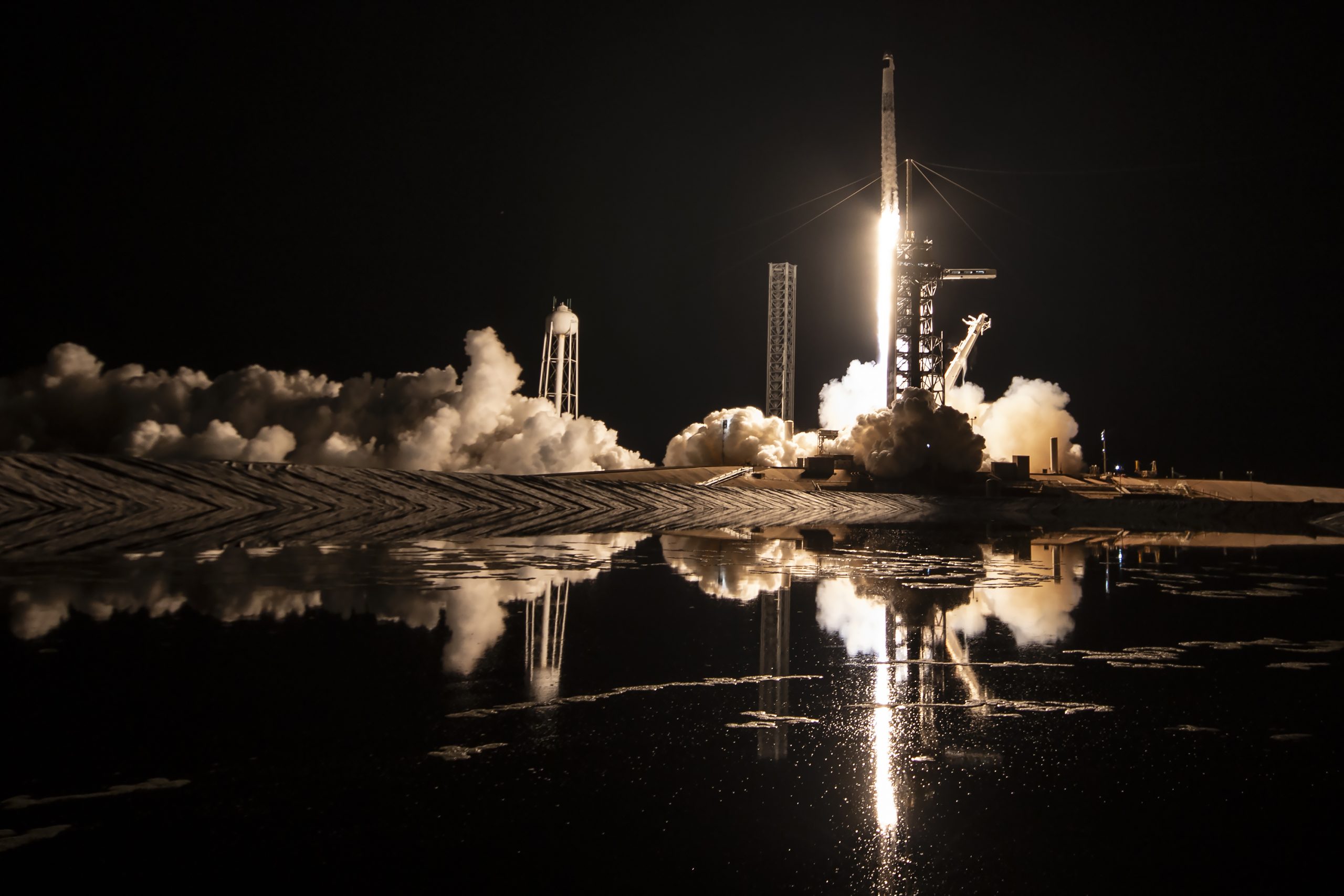
A new report this week suggests that Elon Musk-led rocket company SpaceX is considering an insider share sale that would value the company at $400 billion.
SpaceX is set to launch a primary fundraising round and sell a small number of new shares to investors, according to the report from Bloomberg, which cited people familiar with the matter who asked to remain anonymous due to the information not yet being public. Additionally, the company would sell shares from employees and early investors in a follow-up round, while the primary round would determine the price for the secondary round.
The valuation would represent the largest in history from a privately-owned company in the U.S., surpassing SpaceX’s previous record of $350 billion after a share buyback in December. Rivaling company valuations include ByteDance, the parent company of TikTok, as well as OpenAI.
Bloomberg went on to say that a SpaceX representative didn’t respond to a request for comment at the time of publishing. The publication also notes that the details of such a deal could still change, especially depending on interest from the insider sellers and share buyers.
Axiom’s Ax-4 astronauts arriving to the ISS! https://t.co/WQtTODaYfj
— TESLARATI (@Teslarati) June 26, 2025
READ MORE ON SPACEX: SpaceX to decommission Dragon spacecraft in response to Pres. Trump war of words with Elon Musk
SpaceX’s valuation comes from a few different key factors, especially including the continued expansion of the company’s Starlink satellite internet company. According to the report, Starlink accounts for over half of the company’s yearly revenue. Meanwhile, the company produced its 10 millionth Starlink kit last month.
The company also continues to develop its Starship reusable rocket program, despite the company experiencing an explosion of the rocket on the test stand in Texas last month.
The company has also launched payloads for a number of companies and government contracts. In recent weeks, SpaceX launched Axiom’s Ax-4 mission, sending four astronauts to the International Space Station (ISS) for a 14-day stay to work on around 60 scientific experiments. The mission was launched using the SpaceX Falcon 9 rocket and a new Crew Dragon capsule, while the research is expected to span a range of fields including biology, material and physical sciences, and demonstrations of specialized technology.
News
Tesla Giga Texas continues to pile up with Cybercab castings
Tesla sure is gathering a lot of Cybercab components around the Giga Texas complex.
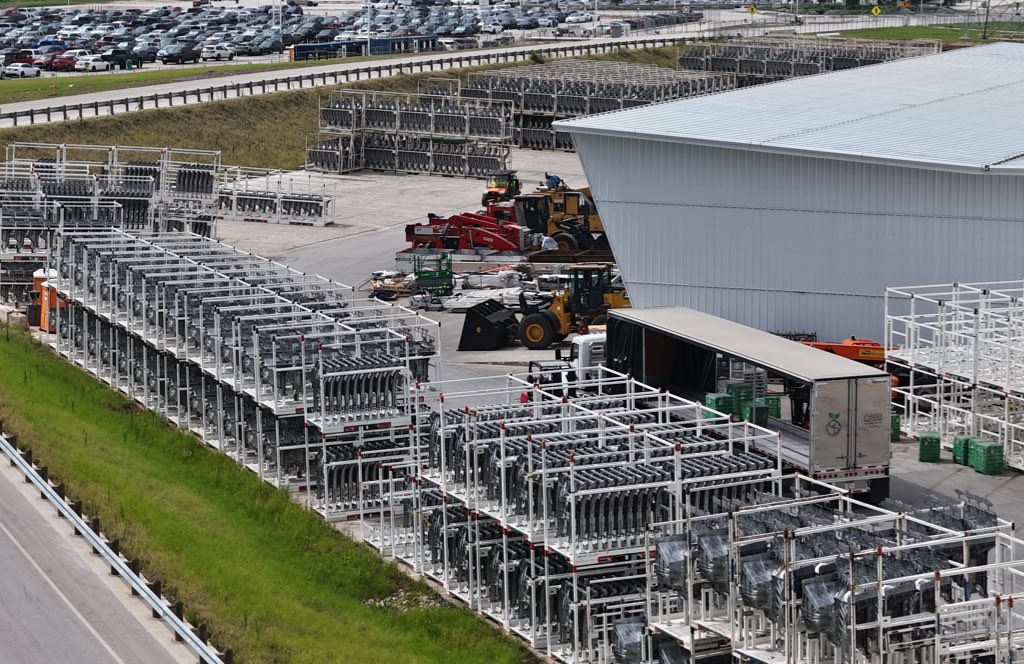
Tesla may be extremely tight-lipped about the new affordable models that it was expected to start producing in the first half of the year, but the company sure is gathering a lot of Cybercab castings around the Giga Texas complex. This is, at least, as per recent images taken of the facility.
Cybercab castings galore
As per longtime drone operator Joe Tegtmeyer, who has been chronicling the developments around the Giga Texas complex for several years now, the electric vehicle maker seems to be gathering hundreds of Cybercab castings around the factory.
Based on observations from industry watchers, the drone operator appears to have captured images of about 180 front and 180 rear Cybercab castings in his recent photos.
Considering the number of castings that were spotted around Giga Texas, it would appear that Tesla may indeed be preparing for the vehicle’s start of trial production sometime later this year. Interestingly enough, large numbers of Cybercab castings have been spotted around the Giga Texas complex in the past few months.
Cybercab production
The Cybercab is expected to be Tesla’s first vehicle that will adopt the company’s “unboxed” process. As per Tesla’s previous update letters, volume production of the Cybercab should start in 2026. So far, prototypes of the Cybercab have been spotted testing around Giga Texas, and expectations are high that the vehicle’s initial trial production should start this year.
With the start of Tesla’s dedicated Robotaxi service around Austin, it might only be a matter of time before the Cybercab starts being tested on public roads as well. When this happens, it would be very difficult to deny the fact that Tesla really does have a safe, working autonomous driving system, and it has the perfect vehicle for it, too.
-

 Elon Musk1 week ago
Elon Musk1 week agoTesla investors will be shocked by Jim Cramer’s latest assessment
-

 News2 weeks ago
News2 weeks agoTesla Robotaxi’s biggest challenge seems to be this one thing
-

 Elon Musk1 day ago
Elon Musk1 day agoElon Musk confirms Grok 4 launch on July 9 with livestream event
-

 News2 weeks ago
News2 weeks agoWatch the first true Tesla Robotaxi intervention by safety monitor
-

 News5 days ago
News5 days agoTesla Model 3 ranks as the safest new car in Europe for 2025, per Euro NCAP tests
-

 Elon Musk2 weeks ago
Elon Musk2 weeks agoA Tesla just delivered itself to a customer autonomously, Elon Musk confirms
-

 Elon Musk2 weeks ago
Elon Musk2 weeks agoxAI welcomes Memphis pollution results, environmental groups push back
-

 Elon Musk2 weeks ago
Elon Musk2 weeks agoElon Musk confirms Tesla Optimus V3 already uses Grok voice AI

















